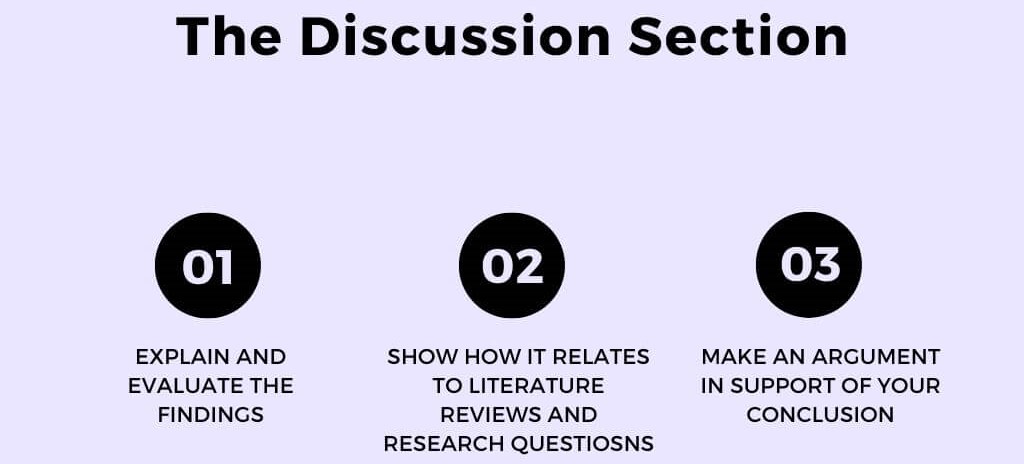
Table of Contents
Nursing research plays a pivotal role in advancing healthcare practices and improving patient outcomes. Effectively communicating your research findings requires a well-structured and formatted paper that adheres to established academic standards.
This comprehensive guide provides a detailed roadmap for navigating the intricacies of nursing research paper formatting.
The Essence of Nursing Research Paper Formatting
The essence of nursing research paper formatting lies in its ability to present research findings in a clear, concise, and organized manner, ensuring that the information is easily accessible and understandable to the reader. Nursing research paper formatting follows a specific structure that guides the reader through the research process, from the introduction to the discussion of findings. This standardized structure allows for consistency in reporting research findings, enhancing the reliability and credibility of the study.
The use of nursing research paper formatting also facilitates the efficient dissemination and evaluation of research findings within the nursing community. By adhering to established guidelines, researchers can ensure that their work meets the standards of the profession and contributes meaningfully to the body of knowledge in nursing.
In essence, nursing research paper formatting is crucial for communicating research effectively, ensuring clarity, consistency, and professionalism in scientific writing.
Step-By-Step Guide to Nursing Research Paper Formatting
I. Introduction: Setting the Stage for Your Research
The introduction serves as the foundation of your nursing research paper. It should engage the reader, establish the relevance of your study, and clearly state your research question and objectives.

a) Hooking Your Audience: Begin with a compelling opening that piques the reader’s interest. This could be a thought-provoking statement, a relevant statistic, or a brief anecdote that highlights the significance of your research topic.
b) Background and Literature Review: Provide a concise overview of the existing knowledge surrounding your research topic. This section should be well-researched and synthesize relevant studies, highlighting gaps in current literature that your study aims to address.
c) Statement of the Problem: Define the specific problem or issue your research aims to investigate. Clearly articulate the research question that will guide your study and its potential implications.
d) Research Objectives: Outline the specific goals your research intends to achieve. State these objectives in measurable terms, outlining what you hope to learn or demonstrate through your study.
e) Hypothesis or Research Question: Depending on your study design, you may formulate a hypothesis or a research question. A hypothesis proposes a relationship between variables, while a research question explores a phenomenon or concept.
II. Methodology: Describing Your Research Design and Methods
The methodology section is the heart of your nursing research paper. Here, you outline the research design, data collection procedures, and data analysis methods used in your study. This section should be detailed and transparent, enabling readers to understand how you conducted your research and evaluate the validity of your findings.

a) Research Design: Specify the type of research design employed (e.g., experimental, quasi-experimental, observational, qualitative). Explain why this particular design is appropriate for your research question and objectives.
b) Population and Sample: Clearly define the population and the sample used in your study. Explain the sampling method used and justify its suitability for your research.
c) Data Collection Methods: Describe the specific methods used to collect data (e.g., surveys, interviews, observations, physiological measurements). Provide detailed information about each method, including instruments used, data collection procedures, and ethical considerations.
d) Data Analysis Methods: Explain the statistical or qualitative analysis methods used to analyze the collected data. Clearly describe the software used, statistical tests employed, or coding and thematic analysis approaches adopted.
III. Results: Presenting Your Findings
The results section presents the findings of your research, providing evidence to support your conclusions. This section should be objective, factual, and presented in a clear and concise manner.
a) Data Presentation: Present the findings in a format that is both informative and visually appealing. This could include tables, figures, graphs, or textual descriptions, depending on the nature of your data.
b) Statistical Significance: If you used statistical analysis, clearly state the statistical significance of your findings, noting p-values and confidence intervals where relevant.
c) Interpretation of Results: Offer a brief interpretation of your findings, relating them back to your research question or hypothesis. Avoid drawing conclusions at this stage, as that is reserved for the discussion section.
IV. Discussion: Making Sense of Your Findings
The discussion section is where you delve deeper into the significance of your results, providing interpretations and drawing conclusions based on the evidence presented. This section allows you to engage with existing literature, highlight the implications of your findings, and suggest future research directions.
a) Summary of Findings: Briefly reiterate the key findings of your study, highlighting their relevance to your research question and objectives.
b) Interpretation and Explanation: Provide a comprehensive interpretation of your results, explaining the significance of your findings within the context of existing literature.
c) Limitations and Strengths: Acknowledge any limitations inherent in your study design, data collection methods, or analysis approaches. Discuss the strengths of your research and how they contribute to the validity of your findings.
d) Implications for Nursing Practice: Articulate the practical implications of your findings for nursing practice, suggesting how your research can inform clinical decision-making, improve patient care, or contribute to policy development.
e) Future Research Directions: Suggest potential avenues for further research based on your findings. This could include exploring alternative research methods, investigating specific areas of interest that emerged from your study, or addressing limitations identified in your research.

V. Conclusion: Summarizing Your Research Contribution
The conclusion provides a concise summary of your research findings and their significance. It reiterates the key contributions of your study, highlights the implications of your findings, and emphasizes the importance of your research to the broader field of nursing.
VI. References: Documenting Your Sources
The references section lists all the sources cited in your nursing research paper. Ensure that you use a consistent citation style, such as APA, MLA, or AMA, as recommended by your journal or institution. This section is crucial for providing credibility and transparency to your research.
VII. Appendices: Additional Supporting Information
Appendices can be used to provide supplementary information that is not essential for the main body of your paper but may be helpful for readers who want more detailed information. This can include raw data, survey instruments, interview transcripts, or detailed methodological explanations.
VIII. Formatting Guidelines: Ensuring Clarity and Consistency
a) Manuscript Style: Follow the guidelines provided by the journal or institution where you plan to submit your paper. This includes specific formatting guidelines for font type, size, spacing, page margins, and headings.
b) Citation Style: Maintain consistency in your citation style throughout the paper. Use a citation manager to help you track your references and ensure accuracy in your citations.
c) Headings and Subheadings: Use clear and concise headings and subheadings to structure your paper and guide the reader through your research. Follow a logical hierarchy of headings and subheadings to create a coherent flow of information.
d) Tables and Figures: Use tables and figures effectively to present data visually. Ensure that they are well-labeled, appropriately formatted, and integrated seamlessly into the text of your paper.
e) Grammar and Punctuation: Pay meticulous attention to grammar and punctuation to ensure that your paper is clear, concise, and error-free. Use spell checkers and grammar checkers to identify and correct any errors.
f) Writing Style: Maintain a clear, objective, and concise writing style throughout your paper. Use appropriate academic language and avoid jargon or overly technical terms.
IX. Ethics and Research Integrity:
a) Informed Consent: If your research involves human participants, ensure that you obtain informed consent from all participants. This involves clearly explaining the purpose of your study, the risks and benefits of participation, and the participants’ right to withdraw from the study at any time.
b) Confidentiality and Privacy: Protect the confidentiality and privacy of all participants by ensuring that their personal information is kept secure and not shared without their consent. Use pseudonyms or codes to anonymize participant data.
c) Data Integrity: Maintain the integrity of your research data by ensuring that it is accurate, complete, and free from any fabrication or manipulation. Properly store and manage your data to ensure its security and availability for future analysis or replication.
d) Plagiarism: Avoid plagiarism by properly citing all sources of information used in your paper. Use a plagiarism checker to identify any unintentional instances of plagiarism and make necessary corrections.

X. Revising and Editing:
a) Critical Self-Assessment: Thoroughly review your nursing research paper for clarity, logic, and coherence. Ensure that your arguments are well-supported, your findings are presented accurately, and your conclusions are justified.
b) Peer Review: Seek feedback from colleagues, mentors, or peers who can provide constructive criticism and suggestions for improvement.
c) Professional Editing: Consider using a professional editor to ensure that your paper is polished and free from errors in grammar, punctuation, and style.
Sample Nursing Research Paper
The following sample demonstrates effective nursing research paper formatting. However, you should carefully read the guidelines for your assignment to determine the recommended nursing research paper formatting for that particular assignment. The sample only gives a sneak peak of how nursing research paper formatting should be conducted.
Impact of Mindfulness Meditation on Anxiety Levels in Hospitalized Patients: A Randomized Controlled Trial
Authors: [Your Name], [Collaborator Name(s)]
Affiliation: [Your Institution/Department]
Abstract
Background: Anxiety is a common experience among hospitalized patients, impacting their recovery and overall well-being. Mindfulness meditation has been shown to reduce anxiety in various populations. This study aimed to investigate the effectiveness of mindfulness meditation in reducing anxiety levels in hospitalized patients.
Methods: A randomized controlled trial was conducted with 60 hospitalized patients experiencing moderate to severe anxiety. Participants were randomly assigned to either a mindfulness meditation group (n=30) or a control group (n=30). The mindfulness meditation group received 30 minutes of guided mindfulness meditation sessions twice daily for 7 days. Anxiety levels were assessed using the Generalized Anxiety Disorder Scale (GAD-7) at baseline, post-intervention, and at a 1-week follow-up.
Results: A significant reduction in anxiety scores was observed in the mindfulness meditation group compared to the control group at post-intervention (p<0.05) and at the 1-week follow-up (p<0.01). This suggests that mindfulness meditation can effectively reduce anxiety in hospitalized patients.
Conclusion: This study provides evidence that mindfulness meditation is a feasible and effective intervention for reducing anxiety in hospitalized patients. Further research is needed to explore the long-term effects and the optimal frequency and duration of mindfulness meditation sessions in this population.
A Journey Toward Scholarly Excellence
Mastering the art of nursing research paper formatting is an essential skill for any aspiring nurse researcher. By adhering to established guidelines, you can effectively communicate your findings, contribute to the advancement of nursing knowledge, and ultimately enhance patient care. Remember, stellar nursing research paper formatting and writing is a testament to your commitment to academic excellence and research integrity.
Common Pitfalls to Avoid in Nursing Research Paper Formatting
While the specific requirements for nursing research paper formatting can vary depending on the journal or institution, some common pitfalls can hinder the clarity and professionalism of your work. Avoiding these pitfalls will ensure your paper is well-received and effectively communicates your research findings. The following are the most common mistakes to avoid in nursing research paper formatting.
1. Inconsistent Formatting: One of the most crucial aspects of nursing research paper formatting is consistency. Using multiple font styles, sizes, and spacing throughout your paper can create a cluttered and unprofessional look. Stick to the chosen nursing research paper formatting guidelines for everything from headings and subheadings to citations and references.
2. Ignoring Citation Style Guidelines: Correctly citing sources is essential for academic integrity and to give credit to the authors whose work you are building upon. Use a specific citation style (e.g., APA, MLA, Chicago) throughout your paper and be sure to follow all its rules. That should include nursing research paper formatting for in-text citations and the reference list.
3. Neglecting Title Page Requirements: The title page sets the first impression of your nursing research paper formatting. Ensure it includes all necessary elements, such as the title, your name, affiliation, and the date. Remember to center the information and use appropriate font sizes for readability.
4. Poor Use of Tables and Figures: Tables and figures can be valuable tools for presenting data in a clear and concise way. However, poorly formatted tables and figures can distract from your research. Ensure they are properly labelled, captioned, and formatted according to the chosen nursing research paper formatting guidelines.
5. Overlooking Grammar and Spelling: Even minor errors in grammar and spelling can impact the credibility of your research. Proofread your paper carefully, or consider using a grammar checker to ensure clarity and professionalism.
By avoiding these common pitfalls, you can ensure that your nursing research paper formatting is up to par, allowing your research to shine and communicate its findings effectively. Remember to carefully review and adhere to the specific nursing research paper formatting guidelines of the journal or institution where you are submitting your work.

Through meticulous attention to detail, clear and concise writing, and a commitment to ethical research practices, you can ensure that your research findings are presented effectively and contribute meaningfully to the broader field of nursing.
Get Professional Help with Nursing Research Paper Formatting
At PhD Nurse Writer, we offer professional nursing research paper writing assistance for undergraduate, Degree, Master’s and Doctoral studies. Our writers can assist you with brainstorming topic ideas, research paper writing, proof reading, formatting and plagiarism removal to ensure an excellent paper. Besides research papers, we can also assist you with writing and formatting nursing essays, case studies and dissertations.





